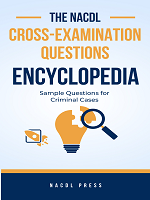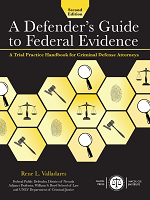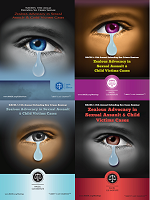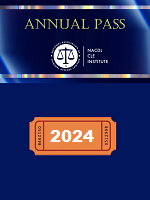Access to The Champion archive is one of many exclusive member benefits. It’s normally restricted to just NACDL members. However, this content, and others like it, is available to everyone in order to educate the public on why criminal justice reform is a necessity.
This past summer, the nation’s long history of racial strife once again took center stage in the public consciousness. The sad, shocking events in Ferguson, Mo., compelled the public to face the painful reality that the country has not yet achieved the elusive goal of universal racial and ethnic harmony — a goal toward which so many of good will have worked for far too long. Rather, the scenes from Ferguson served as a reminder that in some communities, racial and ethnic disparities are an indelible hallmark of the nation’s criminal justice system.
This, of course, is no secret to the criminal defense bar. One cannot be a criminal defense lawyer in this country and not recognize from the very first day of practice that racial and ethnic disparity is endemic in the criminal justice system. While many have already experienced it in the communities in which they grew up, all lawyers immediately see it when they look at the faces in the courtroom. They know it when they learn the purported basis for a car stop or a street search. They fight against it when bail is set and when plea discussions take place. And, of course, they see it in sentencing outcomes. This is not anecdotal. Disparity is a reality. The numbers confirm it.1 Thus, for some who do not understand the true nature and depth of the defense bar’s commitment to fundamental constitutional precepts, it may have seemed somewhat odd that in the days and weeks after Michael Brown was shot to death in Ferguson, NACDL did not speak out. It certainly was not for lack of inquiry or opportunity. Rather, NACDL’s exercise of its institutional prerogative to remain silent was itself a reflection of the depth of that commitment. When events are unfolding, facts are in flux and a criminal charge may be looming, NACDL cannot remain faithful to its mission if it jumps into the fray and risks prejudgment. Criminal defense lawyers know all too well that death and public outrage are a combustible mix that at best can make a fair trial difficult to achieve, and at worst can lead to injustice, all too often including wrongful conviction.
But silence concerning an unfolding event that may result in a prosecution is no excuse to avoid public discourse on the fundamental ills that are so clearly evident in the criminal justice system. In fact, it is all the more reason for the defense bar to bear witness to the pervasive inequities that from time to time erupt into tragedies like Ferguson. Indeed, defense lawyers, as professionals imbued with the solemn duty to defend the constitutional rights of all individuals, have a special responsibility to speak out. They should be in the vanguard of a movement that hopefully will be the final, triumphant struggle to rid the system of racial and ethnic bias and disparity, both intentional and inadvertent, and both explicit and implicit.
NACDL members should take great pride in knowing that with increasing determination the Association has risen to that challenge.
Over the course of the past several years, NACDL has been in the forefront of examining the many issues that Ferguson catapulted into the headlines: policing practices in minority and poor communities, militarization of police forces, and disparate treatment at various stages of the process, from first appearance to sentencing and beyond the completion of a criminal sentence. NACDL has hosted symposia and sponsored scholarships. The Association has long pursued pretrial justice and sentencing reform, and it has produced major, impactful reports on (1) racial and ethnic disparities in the criminal justice system; (2) problem-solving courts; (3) the need for reform of the nation’s misdemeanor courts; and (4) collateral consequences. While some of these projects directly focused on racial and ethnic disparity, all of them assessed the role of disparity in the issue that was studied.2
The most recent project to evidence NACDL’s sustained commitment to expose and remedy disparity was a hard-hitting two-part webinar that focused keenly on questions that must be addressed in the wake of Ferguson: Under Siege: The Defense Bar Examines Police Militarization, Ethnic & Racial Dynamics of Sentencing, and Their Impact on Criminal Justice Outcomes. The program featured two panel presentations. The first panel focused on the public policy choices and practices that foster disparity and explored concrete steps that can alleviate it. The second panel offered a community perspective through the eyes of representatives of law enforcement and the affected community.3
Several keys points that emerged from these panels must inform public discourse and should guide NACDL’s advocacy efforts. In the first panel, Kara Dansky, senior counsel for the ACLU, explained the key findings in the ACLU’s groundbreaking report on police militarization.4 Ms. Dansky described the government program under which the Defense Department has put an arsenal of military weaponry in the hands of local police departments at no cost and with no guidance, regulation, or oversight. Further, she described how Special Weapons and Tactics (SWAT) raids, which employ that equipment, are conducted disproportionately in minority communities, without any specific evidence of genuine emergency or danger.
Edwin Burnette, vice president of Defender Legal Service for the National Legal Aid and Defender Association, explained how implicit bias informs policing practices and permeates the entire system. In doing so, Mr. Burnette candidly confronted the fundamental distinction between intentional racism and ingrained bias, the latter being inherently more difficult to address, but also far more pervasive. He stressed the need for training to enable all actors in the criminal justice system — starting with police, but including prosecutors, parole and probation officers, judges, and even defense counsel — to cultivate a culture of sensitivity to implicit bias. Indeed, he was quick to point out that merely having police forces reflect the demographics of the policed community is not a panacea. Implicit bias is also prevalent among minority police officers. Once these biases are exposed and understood, evidence-based practices can supplant the false assumptions spawned by implicit bias to produce decision-making that can purge disparity from the system.
The third panelist, Nkechi Taifa, senior policy analyst at the Open Society Foundations, explained how the rule of unintended consequences, which guided America’s drug enforcement policies since the late 1980s, produced irrational laws that led to unacceptably harsh sentencing outcomes disproportionately impacting minority communities. Ms. Taifa then traced some of the positive developments, such as the reduction in the crack/powder cocaine ratio, new charging policies by the Department of Justice, and the recent clemency initiative. While helpful, she pointed out that they are only a beginning, and what is needed is a reorientation in thinking to ensure that oversentencing is not the norm.
Beyond sentencing, the panelists agreed that improved training is essential. There must be greater awareness of disparate outcomes so that they can be addressed at their source, and there must be recognition that policing practices that treat communities as a hostile enemy — akin to a war mentality — foster distrust and actually undermine public safety.
The second panel also included Kara Dansky, and featured Ron Hampton, a former police officer appearing on behalf of D.C. Representatives for Blacks in Law Enforcement of America, and Lamont Carey, founder and CEO of LaCarey Enterprises, Inc. This panel provided an unusually powerful window into what it is like to be policed in a minority community — and what it is like to police such a community, especially for a minority police officer. Mr. Carey, who grew up in a minority neighborhood in Washington, D.C., explained how he grew up with a distrust for police officers: “[E]very time they came, they took someone away that I loved or that I knew, or they brutalized them in some form or fashion. So I was always skeptical and fearful.” He later observed that often bringing the police into the community can cause difficult situations to escalate, specifically citing the police practice of arresting people and turning them into informers as a factor that breeds violence and distrust.
Mr. Hampton explained what it was like to be an African American police officer, noting that until the late 1960s black officers could not work with white officers, took on foot patrols because they could not ride in cars with white officers, and could not arrest white people. While those abhorrent practices have ended, it remains the case that many white officers have never been in black communities and therefore are not sensitive to the community perceptions of various policing practices. All of the panelists agreed greater discipline is needed within police departments. There must be true accountability for abusive tactics and, whether or not the police officers live in a community, they must become active in the communities they police if disparate practices are to be curtailed.
These, and so many other issues that were discussed in the “Under Siege” panels, lead to difficult, sometimes painful conversations. But it is only by candidly confronting hard realities that there is an opportunity to deal with the root causes of disparity. It is no longer adequate to avoid the problem and merely react when a crisis erupts. In every way possible, the criminal defense bar should lead the reform movement. Defense lawyers can do it in every case, at every stage of the litigation, by highlighting disparate practices and outcomes. They can also do it in their bar and community activities. As the voice of the organized criminal defense bar, NACDL will provide resources for members to tackle these issues, and will focus its advocacy on remedial reforms wherever and whenever possible. While NACDL may remain silent as a particular case unfolds, NACDL’s voice will always be heard loud and clear in support of systemic reform.
Notes
- Report of The Sentencing Project to the United Nations Human Rights Committee Regarding Racial Disparities in the United States Criminal Justice System at 3 (Aug. 2013), available at http://sentencingproject.org/doc/publications/rd_ICCPR%20Race%20and%20Justice%20Shadow%20Report.pdf (“Racial minorities are more likely than white Americans to be arrested; once arrested, they are more likely to be convicted; and once convicted, they are more likely to face stiff sentences. African American males are six times more likely to be incarcerated than white males and 2.5 times more likely than Hispanic males. If current trends continue, one of every three black American males born today can expect to go to prison in his lifetime, as can one of every six Latino males — compared to one of every 17 white males.”) (citations omitted); NACDL, Collateral Damage: America’s Failure to Forgive or Forget in the War on Crime at 23 (May 2014) (“The black arrest rate is 716 per 100,000 while the white arrest rate is 192 per 100,000, despite the fact that both populations use marijuana at similar rates across all age groups.”), citing Am. Civil Liberties Union, The War on Marijuana in Black and White: Billions of Dollars Wasted on Racially Biased Arrests at 9 (2013). Also see trial judge Shira Sheindlin’s findings in Floyd v. City of New York, 959 F. Supp. 2d 540, 562 (S.D.N.Y. Aug, 12, 2013)(As the city “adopted a policy of indirect racial profiling by targeting racially defined groups for stops based on local crime suspect data[,]” the court found the resulting “disproportionate and discriminatory stopping of blacks and Hispanics in violation of the Equal Protection Clause. Both statistical and anecdotal evidence showed that minorities are indeed treated differently than whites.”).
- See www.nacdl.org/reports.
- NACDL State Legislative Affairs Director Angelyn C. Frazer organized the panels. She opened the panels by expressing NACDL’s commitment to reform, and NACDL President Theodore Simon followed by underscoring the determination of NACDL’s leadership to address issues of unfairness in the criminal justice system. Denver attorney and former NACDL President Lisa M. Wayne moderated both panels. The program may be viewed in its entirety at www.nacdl.org/racialjustice. That link is also a portal to myriad other resources — generated by NACDL and other groups — that address disparity.
- Kara Dansky is the primary author of the ACLU’s report War Comes Home: The Excessive Militarization of the American Policing (June 2014), available at https://www.aclu.org/war-comes-home-excessive-militarization-american-policing.
About the Author
Norman L. Reimer is NACDL’s Executive Director and Publisher of The Champion.
Norman L. Reimer
NACDL
1660 L Street, NW, 12th Floor
Washington, DC 20036
202-465-7623
Fax 202-872-8690
nreimer@nacdl.org






